The Dorman
hand lever presses were very popular and
were copied by several other companies, but
the only company that went by the name of
Baltimorean, was the original Dorman press.
The Dorman factory was lost to the Great
Baltimore Fire in 1904.
Dorman�s
hand �Lever Presses� as they were sometimes
called at the time were very popular, and
were copied closely by several other
manufacturers, notably John Sigwalt of
Chicago (see his Chicago No.10, which lacks
only the rippled ornamentation below its
lever) and Baumgarten of Baltimore, who
copied nearly every aspect of Dorman�s
Baltimore line, including its name. Dorman�s
presses go by the name �Baltimorean� while
Baumgarten�s use �Baltimore.�

|
|||
|
UNFINISHED
PAGE - A WORK IN PROGRESS
updated 9/30/18 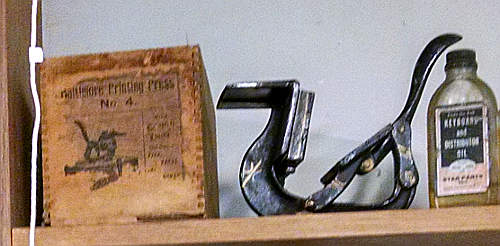 The J.F.W. Dorman Company of
Baltimore began making their Baltimorean small
presses in 1889. Later on, Baumgarten, also of Baltimore,
copied these presses and sold them as the "Baltimore Printing Press". The J.F.W. Dorman Company of
Baltimore began making their Baltimorean small
presses in 1889. Later on, Baumgarten, also of Baltimore,
copied these presses and sold them as the "Baltimore Printing Press".
At about the same time, Sigwalt began to market nearly identical presses in their "Chicago" series. The Baltimorean presses came first, but were challenged by rivals Baltimore, Sigwalt and Daughaday and eventually Kelsey, with their "Junior" press. As we gather more information on these presses we'll update this page.. Our little Baltimore No. 4 came to us with box it was shipped in, so many years ago. In that box was also some type that can be used in this less-than-type-high chase. In the shop, we have some Baltimores of different sizes awaiting cataloging and restoration. Bob Bozzay's Baltimore No. 4 Jobber is much different press, indeed - a full-sized, commerically-viable printing press We also have a Baltimorean No. 9 as well as Baltimore No. 9, No. 10 and No.11 and one unnamed model otherwise identical to the 9 & 10. We have cast new rubber ink rollers for them. The No. 9 takes a 5" wide roller; the 10 & 11 take a 6" wide roller. The roller trucks are slightly larger in diameter than the rubber. The unnamed model while otherwise identical in all details to the 9 & 10, has no roller system attached - but it could be easily added in minutes using only a screwdriver... So, here's what we have learned about the Baltimore and Baltimorean Presses - with some links too other informative sites below. First, Dorman's Baltimorean Advertisement
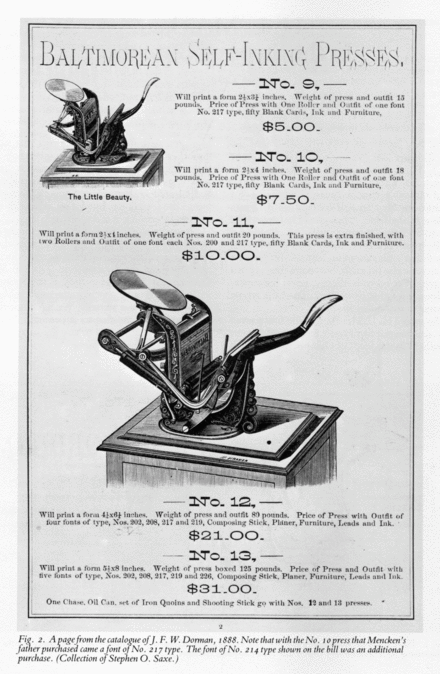 image source: Collection of Stephen O. Saxe Next: More Information on Baumgarten's presses as we find it.... Interesting historical/literary note:
In 1888, when author Henry L. Mencken was a boy, his father bought him a small Baltimore press and he proceeded to print some cards of his own. Since the the font he used for his name was 18 point Blackletter Text (similar to old English), and he lacked lowercase "r's", he used "H.L. Mencken" instead of spelling out "Henry". For the rest of his life, he was known as "H.L. Mencken"... ref: "H.L. Mencken: In the Steps of Gutenberg" - Saxe, Fitzpatrick, Rasmussen 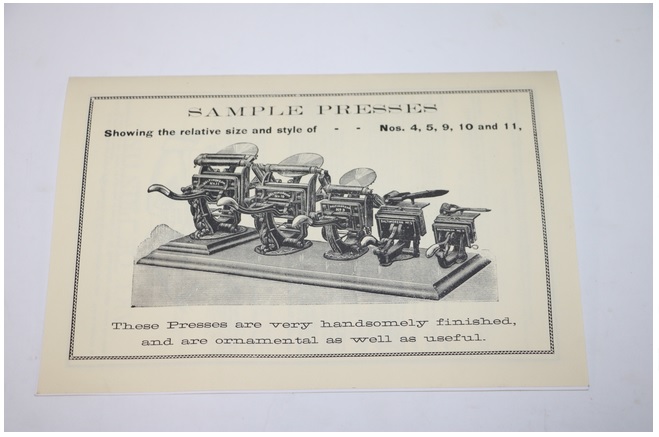 image source: Saxe(?) The advertisement above shows 5 named models of the Baltimore (or Baltimorean) presses. Note the No.4 self-inker on the right. (we have one of these) as well as the numbers 10 & 11 to the left. Also note the advertising trick of mounting the No. 11 on a board to make it look larger than and different from the No. 10, while, with the exception of the roller hook itself, the two presses are 100% identical - except, perhaps in retail selling price...
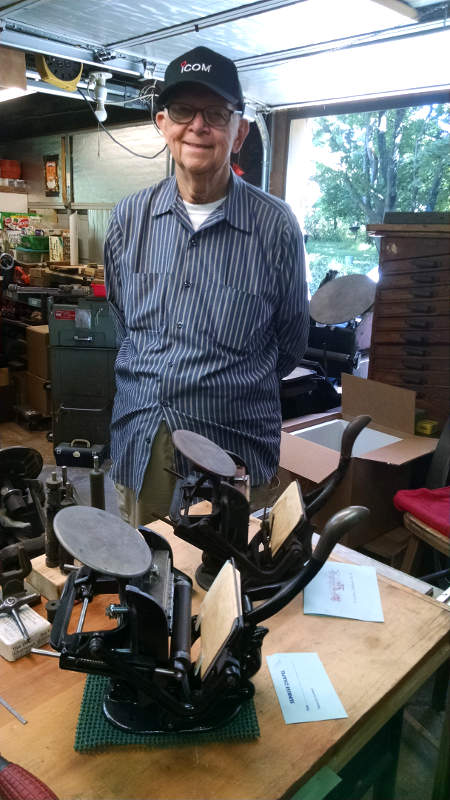 9/27/18:
Jack Dowd brought his Baltimore No. 10 to use to
install a new roller on press and make it print
again. 9/27/18:
Jack Dowd brought his Baltimore No. 10 to use to
install a new roller on press and make it print
again. 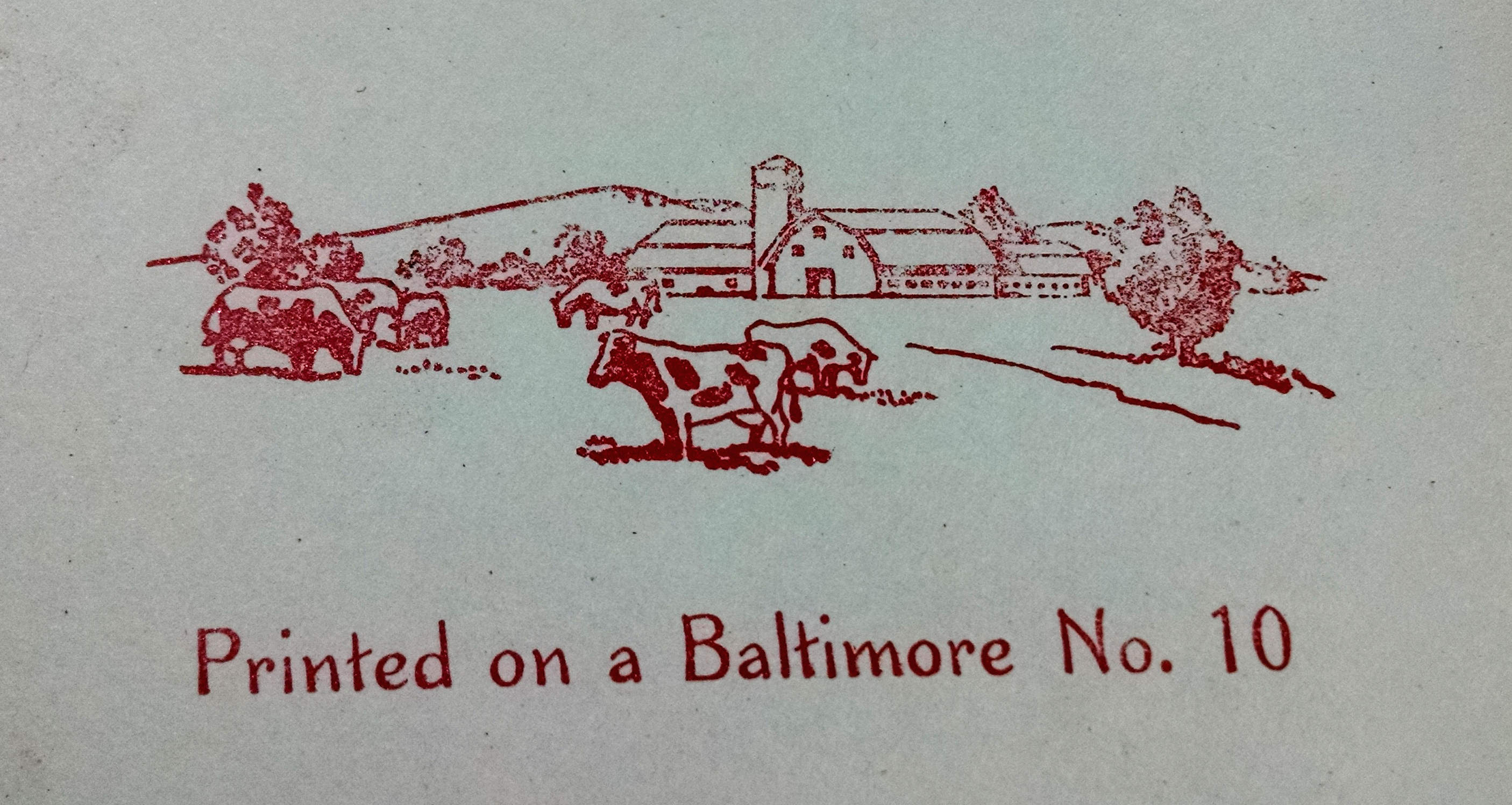 We set up our No.
10 with the new roller before Jack arrived and
printed this piece - the engraving is a full 22
picas wide; the type is 18 point. This press can
clearly be used to print a simple business card or
postal or greeting card. Yes, I am finally convinced
that these little Baltimore and Sigwalts are "real"
printing presses and will print well with minimal
effort and/or make ready. And, since the design is
virtually identical to that of the original
Baumgartner Baltimorean and the Sigwalt Chicago
presses, it is fair to assume that these are all
capable presses and can be used to print items
pretty much indistinguishable from pieces printed on
larger presses - less, of course, the "punch" (deep
impression) which is so popular in today's
letterpress printing. We set up our No.
10 with the new roller before Jack arrived and
printed this piece - the engraving is a full 22
picas wide; the type is 18 point. This press can
clearly be used to print a simple business card or
postal or greeting card. Yes, I am finally convinced
that these little Baltimore and Sigwalts are "real"
printing presses and will print well with minimal
effort and/or make ready. And, since the design is
virtually identical to that of the original
Baumgartner Baltimorean and the Sigwalt Chicago
presses, it is fair to assume that these are all
capable presses and can be used to print items
pretty much indistinguishable from pieces printed on
larger presses - less, of course, the "punch" (deep
impression) which is so popular in today's
letterpress printing. 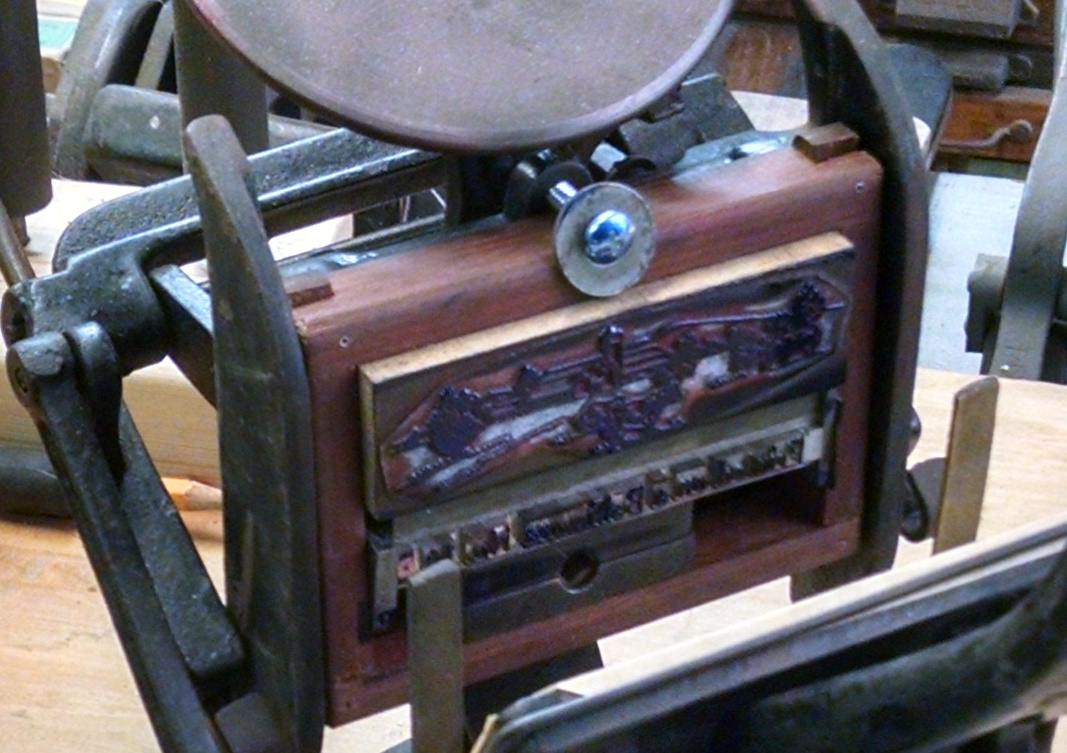 In
addition, although we have 3 of these presses in the
shop, we had no functional chase for our press... so
we made one. Quickly and easily. In
addition, although we have 3 of these presses in the
shop, we had no functional chase for our press... so
we made one. Quickly and easily. We first cut strips of Ipe (Brazilian Iron Wood) to 3/8" x 5/8", then created lap joints in the corners and drilled 1/16" holes through the corners to install small roll pins to hold it together. Since our design did not include a tab to accept the screw that holds the chase in place, we simply used a slightly longer 1/4x20 machine screw with a washer to hold it to the chase bed. It worked quite well. Click the photo for a close-up. We also discovered that Baltimore also sold a press that totally lacked any mounting system for rollers; it was meant to be hand-inked with a brayer. However, like the No. 9 & No. 10, this "no name" model can be "converted" easily to either model 9 or 10 by replacing the bed mount bracket with one that includes the entire roller assembly; the chassis and all other parts are identical and interchangeable. For further reading:
Update: 5/3/18: 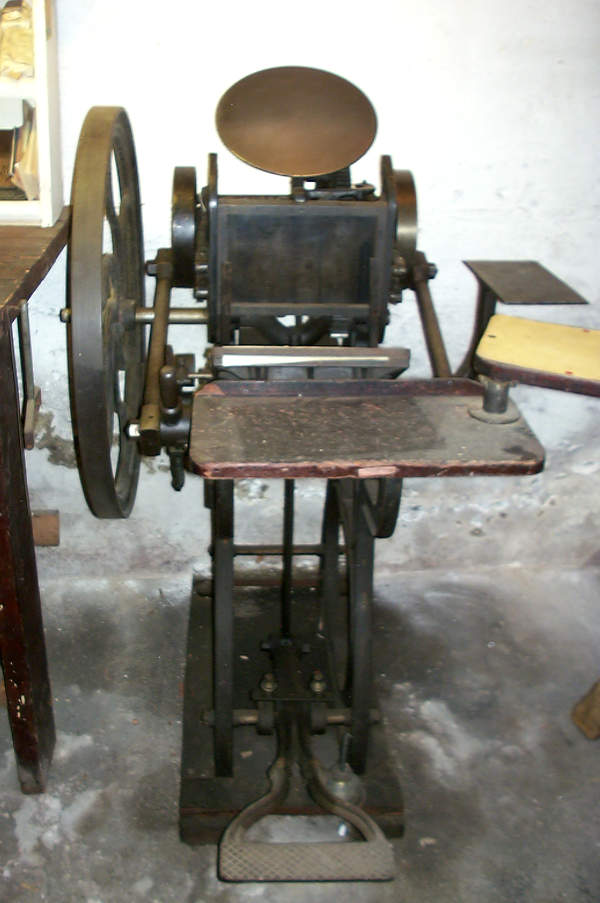 Bob
Bozzay has recently restored his father's old Model 4 Jobber for
use at the East Jersey Olde Towne open-air museum near New
Brunswick, New Jersey. Bob
Bozzay has recently restored his father's old Model 4 Jobber for
use at the East Jersey Olde Towne open-air museum near New
Brunswick, New Jersey. Here's a page about Bob's press in use now at the museum after being in the family for more than fifty years... At one time, Baumgarten & Co. also sold a "Complete Printing Kit" they named "The Excelsior Printer #21". This kit consisted of a rubber type holder and some rubber type. It would allow the user to set type and basically make their own rubber stamp. This was considered their "Complete Outfit for Printing Card, Tags, Envelopes &C." Baumgarten had already copied the Dorman's Baltimorean press. Now he was copying the name of Kelsey's premier printing press. I wonder what Bill Kelsey thought of this. In later years, Kelsey turned the tables on Baumgarten by producing the Kelsey Junior printing press - an Excelsior model that is smaller than any they had made before - and just about the same size as the common Baltimorean, Baltimore & Sigwalt presses. Eventually, it was the last of the mini-sized presses. Not many were built, and they are rare, but we have two in our collection and have recently supplied replacement parts for another.
|
|||
|
~~~~~~~~~~~~~~~~~~~~~~~~~~~~~~~~~~~~~~~~~~~~ |


